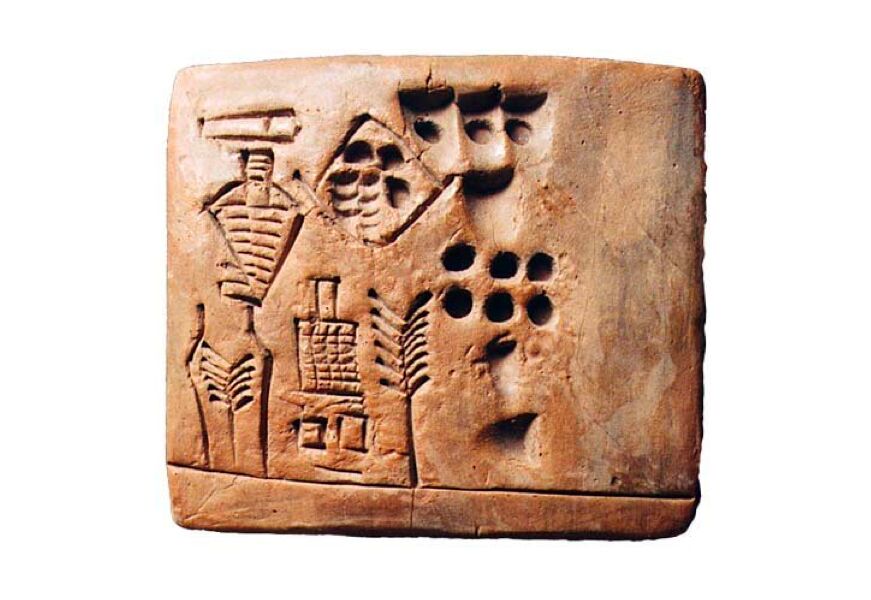Ancient Sumer is identified as the “cradle of civilization,” located in the southern Mesopotamian plains of what is now modern-day southern Iraq. The Sumerians are often called the “first civilization”—and alongside the Sumerian city-states, another civilization, centered at Akkad, emerged, eventually to overtake Sumer as the dominant entity.
While they existed together, the Akkadians and the Sumerians shared close relations and similarities, to the point of being described as “symbiotic” civilizations. “It is impossible to tell the story of one without the other,” notes Paul Cooper in his documentary series Fall of Civilizations.
There was one problem, however: Both groups emerging in the same area, of closely connected people and culture, spoke entirely different, unrelated languages. This is known officially as the “Sumerian Problem.” How did it happen?
How Did This Babble Begin?
Of course, that’s not to say that the Sumerians and Akkadians were unable to have relations between their city-states. Trained individuals were able to speak both languages. But how did two completely different languages emerge from virtually the same area?
Scientists are left baffled. Sumerian is what is known as a “language isolate”—there are many such around the world—a language with no known links or roots to any other ancient language. Akkadian, on the other hand, is an early Semitic language (related to the later Hebrew and Arabic languages—think the biblical account of Abraham, father of the Arabs and Israelites, who traveled west from this land of Mesopotamia).
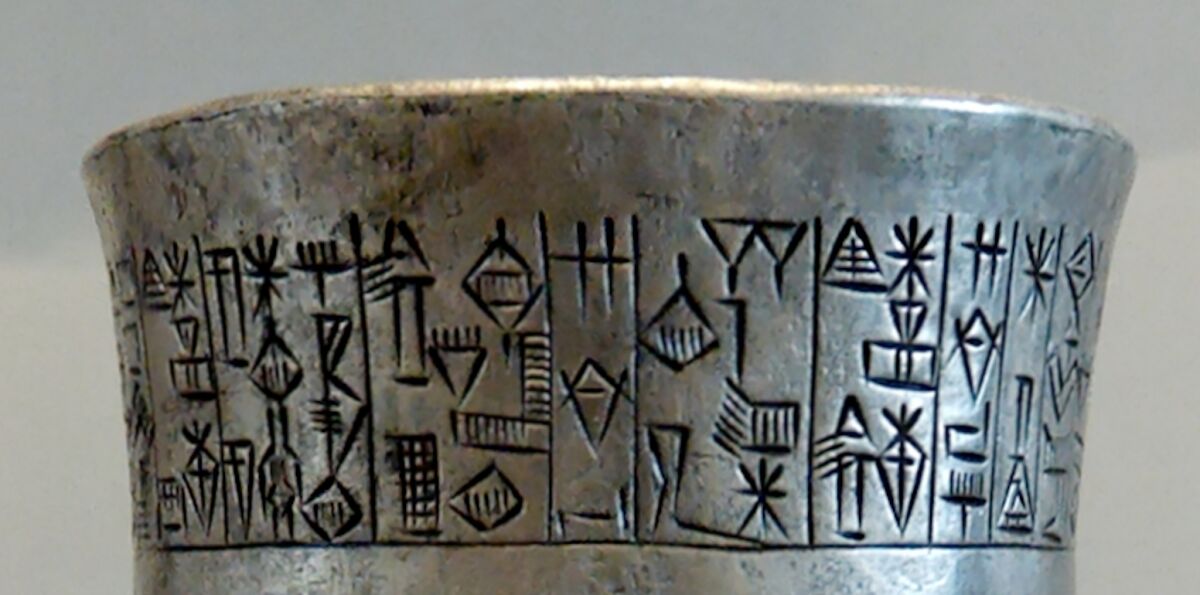
One theory for the appearance of the Sumerian language, strangely enough, revolves around the depth of the Persian Gulf—that it used to be a lot shallower. The theory goes that the Sumerian people may have migrated up along the Persian Gulf from the mountainous East, gradually marching toward the land of Mesopotamia as water levels in the Gulf gradually began to rise. They took with them a story of a great worldwide Flood—theorized as being related to the rising sea levels in the Gulf—and finally settled in Mesopotamia.
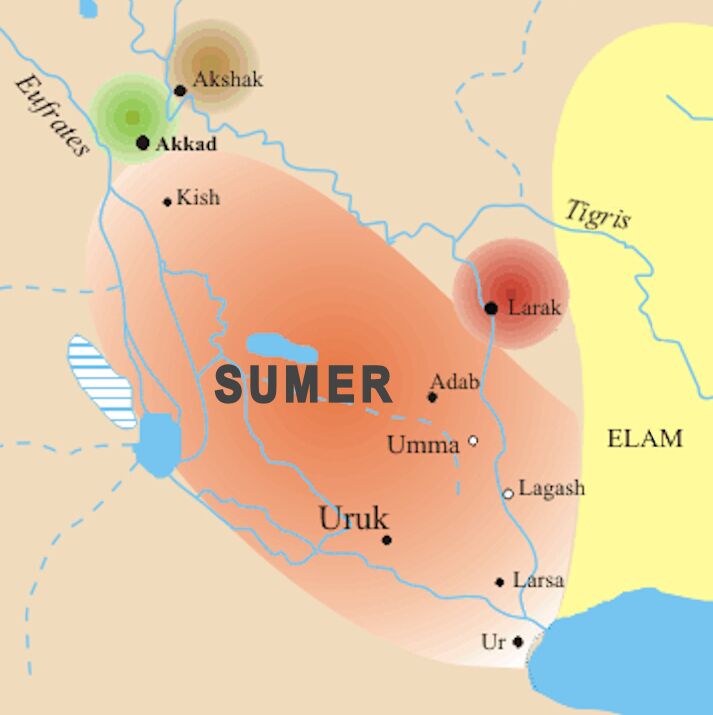
Except there are a few holes in this theory. There is no evidence for the journey, and no linguistic links to the ancient people of the East. It doesn’t explain how the Akkadians and the Sumerians are so closely tied. And further, the Flood story is virtually a “cultural universal”—just about every culture around the world has some kind of foundational Flood story, including the Akkadians. Where did this come from?
Further issues add to the mix. Sumer was the first civilization to be established in the plains of Mesopotamia. Akkad came later. Why is Sumerian the isolate? Where did the Akkadians come from? Why was it the Akkadian language that took wide hold on the region and developed into a multitude of subsequent languages—while virtually everything else was adopted from the Sumerians? If these were entirely different peoples, why did they worship the same deities? Why did they have such closely related city-states? And again, why did they speak such utterly unrelated languages? (A similar thing could also be said for the neighboring ancient Elamites—see the above map—theirs is another peculiar “language isolate.”)
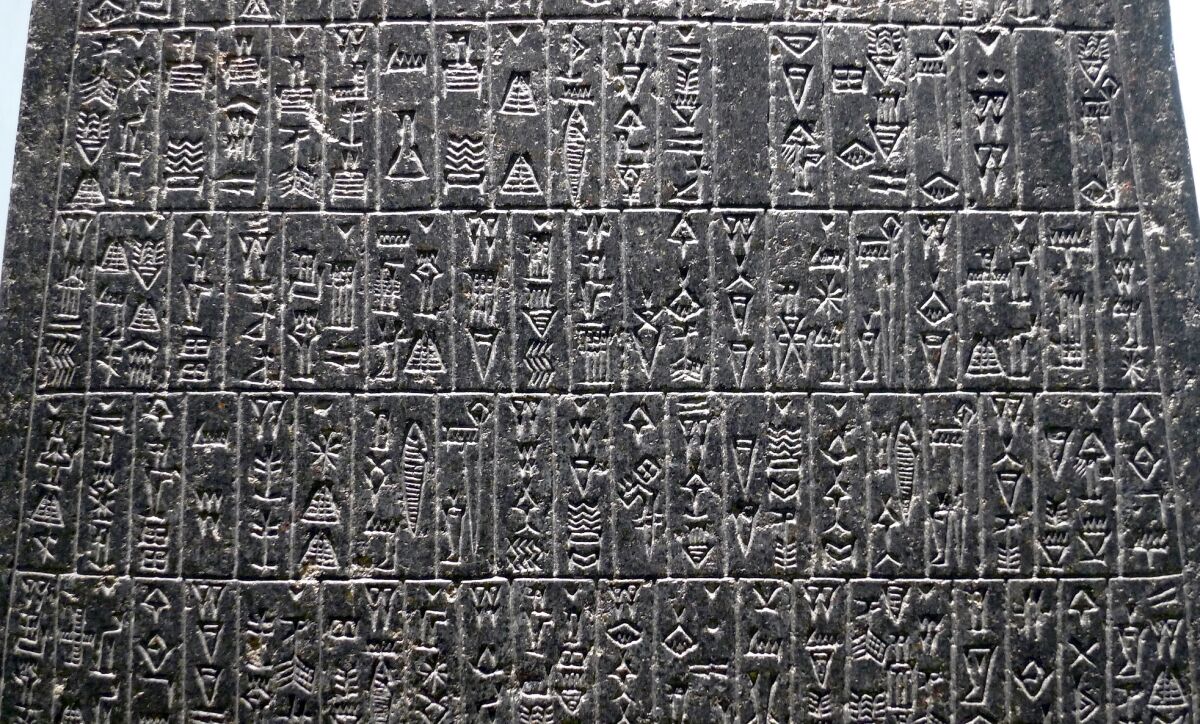
But what if the inhabitants of these city-states themselves have an explanation for the conundrum? What if the answer can be found among the people in question—inscriptional evidence, from the Sumerians themselves? Just such an item has been discovered—a fascinating Sumerian “epic” called Enmerkar and the Lord of Aratta.
‘Change the Speech in Their Mouths’
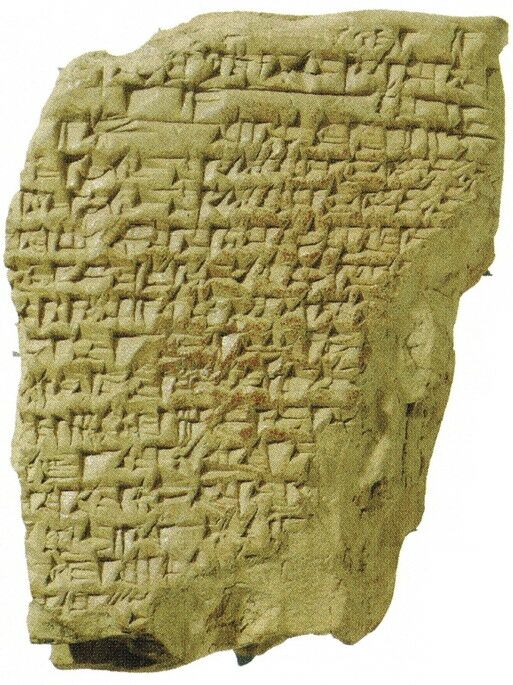
This ancient Sumerian document dates to around 2100 b.c.e. It tells of a back-and-forth dialogue between the Sumerian King Enmerkar and another ruler, the Lord of Aratta, regarding the sending of tribute to build a tower. (The land of Aratta is as-yet unknown—but may have a relation to the biblical Ararat.) Enmerkar threatens that if tribute does not come, he will wreak havoc on the land of Aratta “like the devastation which swept destructively” (possibly harkening to the Flood?). Partway into the long inscription, we find the following paragraph:
Chant to him … the incantation of Nudimmud: “… the whole universe, the well-guarded people—may they all address Enlil together in a single language! … for the ambitious lords, for the ambitious princes, for the ambitious kings—Enki, the lord of abundance … shall change the speech in their mouths, as many as he had placed there, and so the speech of mankind is truly one.”
Here, in the context of attempting to build a tower (specifically, a massive Mesopotamian structure known as a ziggurat), is an incantation to try to cause people to all speak the same language. We see that the god Enki, “lord of abundance,” had “placed” many languages among the nations—and this incantation was intended so mankind could work together with one language. This is not the only possible translation of the text; here is another, alternate translation:
Once … the whole universe, the people in unison, spoke to Enlil in one tongue. … Then Enki, the lord of abundance … changed the speech in their mouths, brought contention into it, into the speech of man that had been one.
The ruler in this text, the Sumerian Enmerkar, desired the unity of language in order to accomplish his tower-building goals—a unity that had once been, but was no longer, due to divine intervention.
But this “epic” is not the only artifact attesting to a divine “confusion of languages” in connection to a massive building project. Another example text comes from ancient Assyria.

‘To Confound Their Speeches’
This document, now within the archives of the British Museum, probably dates to the eighth to seventh centuries b.c.e. The damaged inscription describes the wrath of a god on a building in ancient Babylon:
… he the father of all the gods had repudiated; the thought of his heart was evil. … of Babylon he hastens to the submission, small and great he confounded on the mound. Their walls all the day he founded; for their destruction in the night … he did not leave a remainder. In his anger also his secret counsel he pours out; to confound [their] speeches he set his face. He gave the command, he made strange their counsel ….
This text is especially notable, because of the word “confound”—here, it is the Assyrian-Semitic word balel. And precisely the same word, balel, is used in the biblical account of the building of a tower, and a subsequent confusion of languages. It’s where the word “Babel/Babylon” comes from—a word we use to this day in English, just somewhat rearranged as “babble,” meaning “confusion.”
The Assyrian document connects this confusion of languages with a building at Babylon. The Sumerian document describes it in relation to the building of a tower at a place called Eridu—a location with the same linguistic “logogram” name as Babylon (both are named “nun.ki”). The Bible calls it the tower of Babel—the foundational structure of Babylon.
You’re probably somewhat familiar with the Genesis account of the tower of Babel/confusion of languages. But perhaps you didn’t know that the biblical story actually describes it in the geographical context of Sumer and Akkad.

The Biblical Babel
The Bible describes that in the generations following the great worldwide Flood, humanity descended into southern Mesopotamia as a homogenous group and began the first civilization in “a plain in the land of Shinar; and they dwelt there” (Genesis 11:2). This “Shinar,” place of the first post-Flood biblical civilization, is one and the same as Sumer (or “Shumer”). The territorial names, locations and descriptions match closely.
The Bible describes this civilization as being founded and led by the infamous Nimrod, “a mighty hunter before the Lord” (Genesis 10:9). Some, notably the Egyptologist David Rohl, have identified this Nimrod as one and the same as the Sumerian King Enmerkar. The initial consonants of both names, nmr, match (Hebrew is written without vowels)—and the “kar” in Sumerian may mean “hunter.” The Bible describes Nimrod establishing his civilization in the land of Shinar/Sumer, with his capital at Babel—he also went on to lead the establishment of city-states elsewhere. Verses 10-12:
And the beginning of his kingdom was Babel, and Erech, and Accad, and Calneh, in the land of Shinar. Out of that land went forth Asshur, and builded Nineveh, and Rehoboth-ir, and Calah, and Resen ….
The above-italicized city-states have all been corroborated by archaeology as early centers of civilization in Mesopotamia. Babel, of course, corresponds to the historical Babylon. Erech is the historical Uruk (believed to be the origin of the territorial name Iraq). Accad is, of course, the above-mentioned city-state-cum-kingdom of Akkad. Asshur likewise corresponds to a city of the same name, and later the civilization of Assur—the Assyrians. Nineveh is the famous Assyrian capital city of the same name. And Calah is the Assyrian city of Kahlu. These later cities all link specifically to Asshur, a descendant of the fair-skinned Shem (from which we get the term “Semite”).
But at the root of these biblical civilizations was Nimrod’s first civilization, in and around the land of Shinar/Sumer—which initially controlled Akkad. Nimrod was a descendant of Ham, identified as the father of the black race. The name of Ham’s son (and Nimrod’s father), Cush, means “black” (and “Cushite” is the ancient and biblical name for Africans south of Egypt). Is it just coincidence that these Sumerians called themselves the “Black-Headed Ones”? Could it be a link to the original founder of these city-states?
The Bible proceeds to describe the confusion of languages story in Genesis 11:1-4:
And the whole earth was of one language and of one speech. And it came to pass, as they journeyed east, that they found a plain in the land of Shinar; and they dwelt there … And they said: ‘Come, let us build us a city, and a tower, with its top in heaven [in another “epic,” Enmerkar describes one of his cities as a “city which reaches from heaven to Earth”], and let us make us a name; lest we be scattered abroad upon the face of the whole earth.’
The account describes God witnessing the homogenous melee of humanity and foreseeing the descent back into pre-Flood hedonism. He says in verses 6-9:
‘Behold, they are one people, and they have all one language; and this is what they begin to do; and now nothing will be withholden from them, which they purpose to do. Come, let us go down, and there confound their language, that they may not understand one another’s speech.’ So the Lord scattered them abroad from thence upon the face of all the earth; and they left off to build the city. Therefore was the name of it called Babel; because the Lord did there confound [balel] the language of all the earth ….
There’s an interesting detail related on the Sumerian King List about the individual who ruled just prior to Enmerkar—an individual named Meskiag-kasher (a possible “Cush” parallel). The King List mentions this ruler heading out to sea and disappearing. Could this have constituted an early Cushite/Sumerian migration to Africa, taking the Sumerian language along with them? And could this explain numerous similarities noted between the Bantu language of East Africa and the ancient Sumerian language?
Solving the ‘Sumerian Problem’
The biblical explanation for the “Sumerian Problem” is, unsurprisingly, dismissed by scholars. Yet the biblical “tower of Babel” account provides an unambiguous answer—and one that matches remarkably with the most ancient texts of Sumer, as well as the above-described Assyrian account.
Even more dramatically, these are not odd, stand-alone accounts. Mention has been made above of the “cultural universal” Flood accounts—hundreds of societies around the world, all with their own early ethnic versions of a “great Flood.” The same can also be said for a “tower of Babel”/“confusion of languages” event. Why do numerous ethnic cultures around the world—from Korea to Mexico to Kenya to Guatemala to Greece to Alaska (to name a handful)—all have similar, early parallel accounts of this type of event? Why do, likewise, so many ancient early cultures describe the same—the Sumerians, Assyrians, Chaldeans, Syro-Phoenicians, Hebrews? Where did such a “universal” tradition come from? (You can read more about this subject in our article “The Tower of Babel: Just a Bible Story?”) And why are there so many dozens of language isolates, spoken by hundreds of millions of people around the world today?
The Bible provides an answer to this “problem.” This was a core event in humanity’s shared history that occurred in our “first civilization”—the Sumerian civilization—before the world’s populations were dispersed “abroad upon the face of all the earth,” taking their own versions of this shared event with them, in their own separate languages.
As for scholars who would dismiss the biblical account out of hand—and likewise the Assyrian, Babylonian, Sumerian and other accounts—they are stuck with an unsolvable Sumerian Problem.

